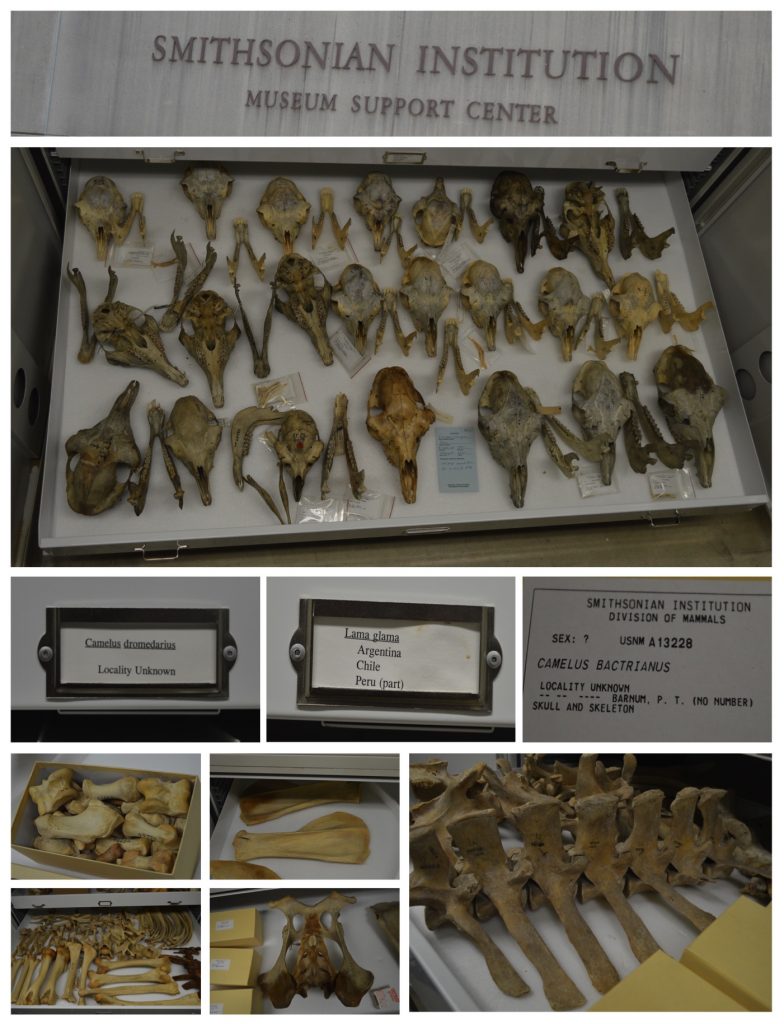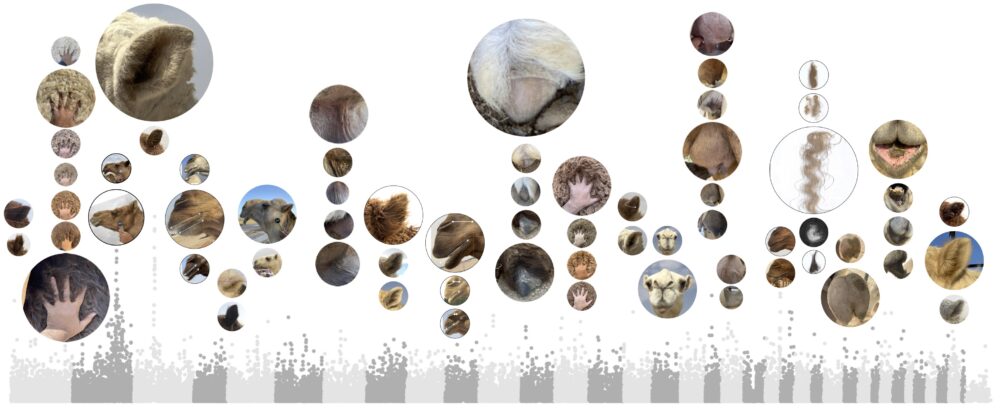What are camelids?
By: Bader H. Alhajeri
Assistant Professor of Zoology, Kuwait University
Camalids are ‘camel-like’ mammals (characterized by long legs and necks) belonging to the family Camelidae (of which Camelinae is the only extant subfamily). This group consists of three extant genera: Camelus, Vicugna, and Lama. The first genus includes both the Arabian single-humped dromedary camel: Camelus dromedaries and two species of the Mongolian two-humped Bactrian camel: Camelus bactrianus (domesticated Bactrian) and Camelus ferus (wild Bactrian)—this genus, along with extinct relatives belongs to the tribe Camelini. The other two genera consists of South American camelids: the alpaca (Vicugna vicugna and Vicugna pacos) and the Llama (Lama glama and Lama guanicoe), both of which belong to the tribe Lamini.
As part of our ongoing effort, at the Jamalid Report research group, to study the dromedary and associated camelids, during my most recent visit to the United States Museum of Natural History (in August 2016), I spent some time examining the camelid skeletons housed at their Museum Support Center. The Support Center is a facility that houses >54,000,000 items of the Smithsonian’s collection, that are not on display. I am grateful to Mr. Darrin Lunde, the USNM Mammals Collection Manager, for arranging this visit. The examination of the camelid skeletons gave me an appreciation for the similarities (and differences) that occur in this group—I was especially struck by the extensive similarities in the crania and dentition. This experience was insightful, and will undoubtedly prove useful, in our ongoing exploration of this interesting, yet relatively understudied, group—the first step of which consists of examining the extent of morphological (and molecular) variation in dromedary camel breeds.
Pictures of some of the camelid skeletons examined at the USNM collection follow.

